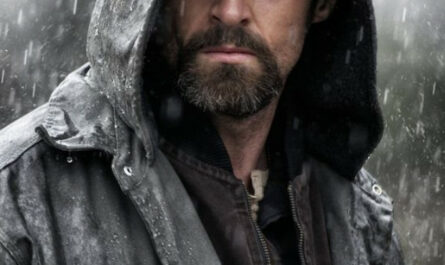Adam Sandler’s “Happy Gilmore” is a cult classic that has left an indelible mark on the landscape of comedy cinema. From its memorable one-liners to its uproarious slapstick humor, the film continues to captivate audiences decades after its release. At the heart of “Happy Gilmore” lies the titular character, a brash and unconventional golfer whose unorthodox methods both confound and entertain. But what inspired the creation of this iconic persona? In this in-depth exploration, we delve into the true story behind Adam Sandler’s Happy Gilmore persona, debunking myths and uncovering the real-life inspirations that shaped this beloved character.
Childhood Friend: The Genesis of Happy Gilmore
Contrary to popular belief, the genesis of Happy Gilmore can be traced back to Adam Sandler’s childhood friend, Kyle McDonough. McDonough, a talented ice hockey player, possessed a unique ability to drive a golf ball with remarkable force, thanks to his hockey skills. This juxtaposition of sports sparked Sandler’s imagination, leading to the creation of an unorthodox golfer with a background in an entirely different discipline.
Sandler has revealed that many of Happy’s mannerisms and outbursts were directly inspired by McDonough’s personality. From his fiery temper to his endearing vulnerability, Happy Gilmore’s character draws heavily from Sandler’s observations of his childhood friend. McDonough’s larger-than-life presence served as the blueprint for Happy’s larger-than-life persona, injecting the character with authenticity and depth.
Shared Love for “Caddyshack”: Influences on Happy Gilmore’s Tone
In addition to his real-life inspirations, Adam Sandler drew inspiration from cinematic influences, particularly the classic golf comedy “Caddyshack” (1980). Alongside the film’s co-writer, Tim Herlihy, Sandler bonded over their mutual admiration for “Caddyshack’s” zany humor and irreverent tone. The influence of this iconic comedy can be felt throughout “Happy Gilmore,” infusing the film with its unique blend of sports comedy and outlandish humor.
“Happy Gilmore” pays homage to “Caddyshack” in more ways than one, from its absurd characters to its off-the-wall scenarios. Like its predecessor, “Happy Gilmore” revels in its absurdity, embracing the chaos with gleeful abandon. The film’s comedic sensibilities owe a debt of gratitude to “Caddyshack,” which laid the groundwork for the irreverent sports comedy genre.
The Name Game: The Origins of “Happy Gilmore”
While the character of Happy Gilmore draws inspiration from real-life sources and cinematic influences, the origin of his name is a whimsical tale in itself. Contrary to speculation, the name “Happy Gilmore” was not derived from either of these sources. Instead, it came from a real amateur golfer named Douglas Gilmore, who competed in the same long-drive contests that Adam Sandler frequented while developing the film.
The serendipitous discovery of Douglas Gilmore’s name added an extra layer of humor to the character, perfectly encapsulating Happy’s carefree and unconventional spirit. With its playful nod to a real-life golfer, “Happy Gilmore” embraced its absurdity with gusto, further solidifying its status as a beloved comedy classic.
Conclusion: The Enduring Legacy of Happy Gilmore
In conclusion, the true story behind Adam Sandler’s Happy Gilmore persona is a fascinating tapestry woven from real-life inspirations, cinematic influences, and humorous coincidences. From the fiery passion of his childhood friend to the irreverent humor of “Caddyshack,” Happy Gilmore embodies a synthesis of disparate elements that coalesce into a truly unforgettable character.
As audiences continue to revisit the antics of Happy Gilmore on the fairways, his enduring legacy serves as a testament to the enduring power of comedy. Whether he’s teeing off against Shooter McGavin or charming audiences with his unorthodox approach to golf, Happy Gilmore remains a timeless icon of laughter and mirth. In decoding the true story behind his creation, we gain a deeper appreciation for the artistry and imagination that went into crafting one of cinema’s most beloved personas.



